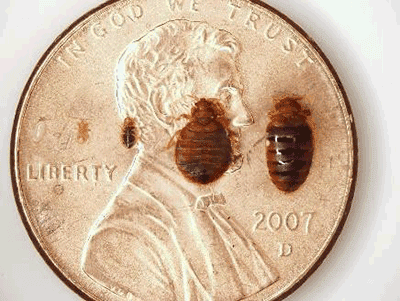Comprehensive A1 Bed Bug Extermination in Houston Area
Comprehensive A1 Bed Bug Extermination in Houston Area
Blog Article
Comprehending the Lifecycle of Pests for Targeted Control Approaches
Comprehending the lifecycle of bugs is an essential element of reliable parasite administration techniques. With a deeper understanding of how pests develop and flourish, tailored control approaches can be created to attend to specific factors in their lifecycle, inevitably leading to more effective parasite management outcomes.
Value of Recognizing Pest Lifecycle
Understanding the lifecycle of bugs is vital for creating reliable and targeted control approaches in insect management. By comprehending the numerous phases a pest goes with from egg to adult, pest control professionals can determine prone factors in the lifecycle where treatment can be most successful.
Furthermore, acknowledging the specific ecological conditions necessary for each and every stage of the pest's lifecycle can guide choices on habitat alteration or exemption methods to lower and disrupt the lifecycle bug populaces. This understanding makes it possible for pest administration professionals to apply proactive measures as opposed to relying only on responsive therapies, resulting in more lasting and lasting insect control remedies. Inevitably, a thorough understanding of bug lifecycles empowers pest control specialists to tailor their methods effectively, lessening environmental influences and taking full advantage of control results.
Secret Phases in Parasite Advancement
To successfully apply targeted control approaches in insect monitoring, a crucial aspect exists in adequately recognizing and comprehending the essential phases in bug advancement. Insect growth normally is composed of numerous essential phases that are crucial for their lifecycle and management.

Vulnerabilities in Bug Lifecycle
Throughout the various phases of an insect's lifecycle, distinct susceptabilities emerge that can be tactically targeted for efficient control actions. One vital susceptability lies in the egg stage, where parasites are frequently extra susceptible to specific pesticides or biological control representatives because of their soft outer shell, making them simpler targets for intervention. Furthermore, the nymph or larval phase provides vulnerabilities as pests undertake fast growth and growth, needing high energy intake that can be exploited by interrupting their food resources or introducing growth inhibitors. Pupal stages, identified by stability and makeover, offer a home window for targeted control via physical barriers or details treatments that impede effective emergence. Ultimately, grown-up insects, while extra durable as a result of their reproductive ability, can still be vulnerable during breeding or egg-laying tasks, which can be disrupted through scent catches or sterilization strategies. Recognizing these susceptabilities in the parasite lifecycle is important for creating specific and effective control methods that successfully manage insect populaces while decreasing ecological influence.
Applying Targeted Control Procedures

Applying targeted control measures usually includes a multi-faceted technique. This might include habitat adjustment to make the atmosphere much less A1 bed bug extermination houston hospitable to bugs, such as removing standing water for mosquito control or sealing entry points for rodents. In addition, organic control approaches can be utilized, where natural killers or microorganisms are introduced to maintain parasite populaces in check.
Chemical control, such as the careful application of chemicals, is an additional usual method. Nonetheless, it is necessary to use these materials deliberately to reduce ecological effect and prospective damage to non-target species. Integrated Bug Administration (IPM) techniques that integrate different control measures in a coordinated and lasting fashion are typically the most reliable in achieving long-lasting pest monitoring objectives. By applying targeted control measures based upon a thorough understanding of parasite lifecycles, bug populations can be efficiently regulated while reducing risks to human health and the setting.
Enhanced Bug Management Practices

Moreover, the consolidation of biological control representatives, such as all-natural killers or microorganisms of insects, can help in reducing dependence on chemical pesticides and advertise a much more well balanced environment. Executing physical obstacles and traps can additionally become part of improved pest management practices, using safe and targeted remedies for pest control. Additionally, using scents and various other semiochemicals can disrupt pest breeding patterns and communication, resulting in lowered insect populaces over time.
Final Thought
In final thought, comprehending the lifecycle of bugs is important for reliable pest administration methods. By determining key phases in insect growth and susceptabilities in their lifecycle, targeted control actions can be implemented to minimize insect populaces. Boosted insect administration methods can help decrease the dependence on broad-spectrum chemicals and advertise more eco friendly and sustainable parasite control techniques. This understanding plays an important role in maintaining healthy environments and agricultural performance.
Comprehending the lifecycle of parasites is essential for establishing effective and targeted control strategies in parasite administration. By understanding the various stages a parasite goes with from egg to adult, pest control professionals can determine susceptible factors in the lifecycle where treatment can be most effective. Inevitably, an extensive understanding of bug lifecycles encourages pest control practitioners to tailor their methods effectively, taking full advantage of and decreasing environmental influences control outcomes.
By carrying out targeted control steps based on a detailed understanding of parasite lifecycles, insect populations can be properly regulated while decreasing risks to human health and wellness and the environment.
By recognizing crucial phases in bug advancement and vulnerabilities in their lifecycle, targeted control steps can be applied to lessen pest populations.
Report this page